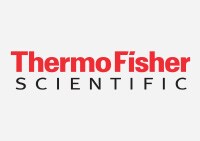Search Thermo Fisher Scientific

Nucleic Acid Labeling and Detection
These products include DNA and RNA assay kits, chemiluminescent EMSA kits, biotin-labeled nucleic acid probes, and fluorescent nucleic probes to label and detect nucleic acids.
Products (81)
Learn More (812)
Documents & Support
(974)81 Products
Filter
Achieve accurate and precise quantification of dsDNA with Qubit dsDNA BR (Broad Range) Assay Kits. These dsDNA quantification kits enable quick and selective detection of low and high abundance DNA samples, and can distinguish dsDNA from ssDNA, RNA, protein, and free nucleotides.
Experience easy, accurate, and precise quantification of dsDNA with Qubit 1X dsDNA HS (High Sensitivity) and Qubit 1X dsDNA BR (Broad Range) Assay Kits. The 1X formulation provides a ready-to-use working solution that enables simple dsDNA sample quantification on Qubit Fluorometers.
Achieve accurate and precise quantification of RNA with Qubit RNA HS, BR, and XR Assay Kits. These RNA quantification kits enable quick and selective detection of low and high abundance RNA samples, and can distinguish RNA from DNA, protein, and free nucleotides.
Enable easy and accurate RNA quantitation with the Quant-iT RNA Assay Kit, which is also available in broad range (BR) and extended range (XR) configurations, as well as a stand-alone high sensitivity (HS) reagent.
Make DNA quantitation easy and accurate in a ready-to-go 1X formulation with the Quant-iT 1X dsDNA HS (High-Sensitivity) and Quant-iT 1X dsDNA BR (Broad Range) Assay kits. Both kits provide a ready-to-use working solution.
Quantitate oligonucleotides or long ssDNA easily and quickly with the Qubit ssDNA Assay Kit, which works with the Qubit Fluorometer and other fluorometers or plate readers. Common contaminants such as salts, solvents, detergents, and protein are well tolerated with this assay.
Perform dsDNA quantification easily and quickly with Quant-iT dsDNA assay kits. Both the Quant-iT High-Sensitivity dsDNA Assay Kit and the Quant-iT Broad-Range dsDNA Assay Kit provide concentrated assay reagent, dilution buffer, and pre-diluted DNA standards.
Easily and accurately quantitate microRNA with the Quant-iT microRNA Assay Kit, which detects miRNA in pure samples down to levels as low as 0.5 ng following the supplied protocol, and even in the presence of mRNA. The assay is highly selective for microRNA over rRNA or large mRNA (>1000 bp).
ULYSIS nucleic acid labeling kits provide a unique method for attaching a fluorescent dye to nucleic acids. The labeling reagent in the kit reacts with the N7 of guanine to form a stable coordination complex, and the reaction is simple and fast - just heat denature DNA (5 minutes), add the label...
Achieve precise and accurate dsDNA concentration measurements over a broad dynamic range with the Quant-iT Picogreen dsDNA Assay kits and dsDNA reagents. Picogreen assays are compatible with most microplate readers and fluorometers.
ARES™ Alexa Fluor™ 647 DNA Labeling Kit
Choose from three, single-color FISH Tag DNA kits with Alexa Fluor dye options (green, orange, or red). The FISH DNA multicolor kit contains four spectrally distinct dyes (green, orange, red, and deep-red) to allow simultaneous localization of multiple sequence-specific DNA targets in chromosomal...
Achieve precise quantitation of dsDNA or RNA samples with stand-alone Qubit nucleic acid standards. The Qubit standards can be used in conjunction with different Qubit or Quant-iT nucleic acid quantitation assay kits and offer stand-alone versions of the kit standard for performing additional...
BioNick™ DNA Labeling System
ViewRNA Colorimetric Tissue assays are RNA in situ hybridization (ISH) assays for the reliable detection of mRNA targets within tissue sections at single-copy sensitivity. The ViewRNA assays use proprietary chemistry for the target-specific probe sets along with branched DNA (bDNA) technology to...
Learn More (812)
View all
By employing expertise in enzymology, nucleotide chemistry, and dye chemistry, we've developed a highly utilized, trusted portfolio of fluorescent, radioactive, chromogenic, and hapten DNA labeling solutions for blotting, in situ hybridization, and general molecular biology applications.
For Research Use Only. Not for use in diagnostic procedures., View all How do your nucleic acid labeling methods compare to one another? How do I purify the labeled oligonucleotide from the unreacted dye and unlabeled oligonucleotide following the reaction?
Documents & Support (974)
View all
Do you have any tips on using the ULYSIS Nucleic Acid Labeling Kits for RNA labeling?
Is ULYSIS labeling compatible with microarray analysis?














